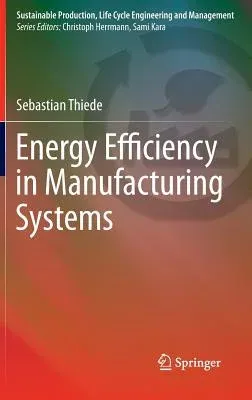Sebastian Thiede
(Author)Energy Efficiency in Manufacturing Systems (2012)Hardcover - 2012, 20 April 2012

Qty
1
Turbo
Ships in 2 - 3 days
In Stock
Free Delivery
Cash on Delivery
15 Days
Free Returns
Secure Checkout

Part of Series
Sustainable Production, Life Cycle Engineering and Managemen
Print Length
198 pages
Language
English
Publisher
Springer
Date Published
20 Apr 2012
ISBN-10
3642259138
ISBN-13
9783642259135
Description
Product Details
Author:
Book Edition:
2012
Book Format:
Hardcover
Country of Origin:
NL
Date Published:
20 April 2012
Dimensions:
23.37 x
15.49 x
1.78 cm
Genre:
Science/Technology Aspects
ISBN-10:
3642259138
ISBN-13:
9783642259135
Language:
English
Location:
Berlin, Heidelberg
Pages:
198
Publisher:
Weight:
430.91 gm